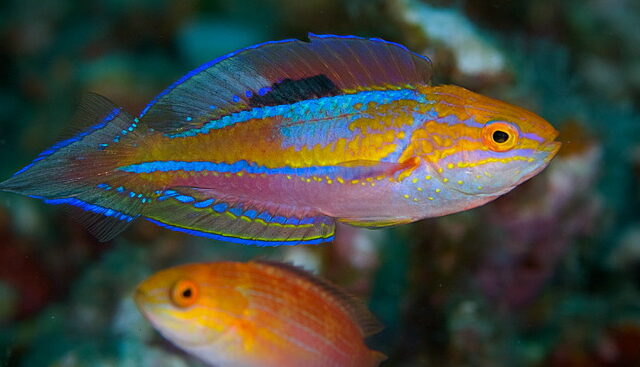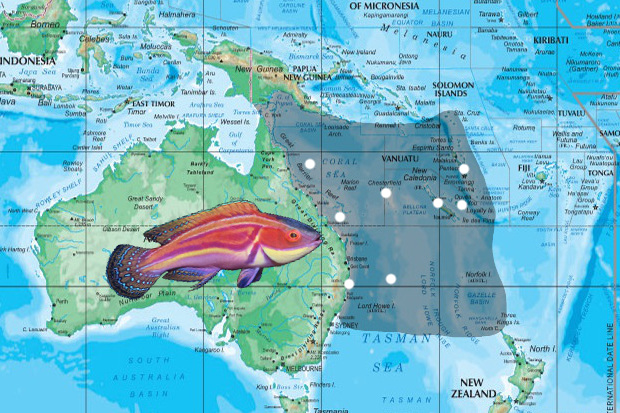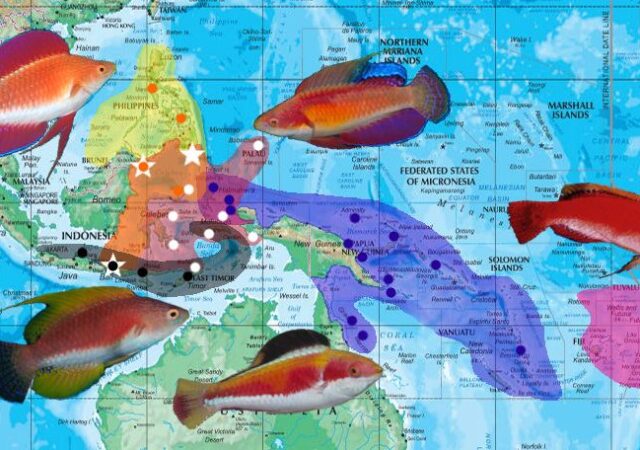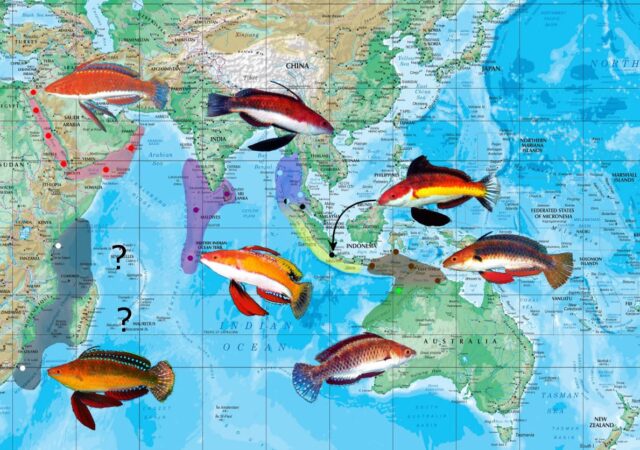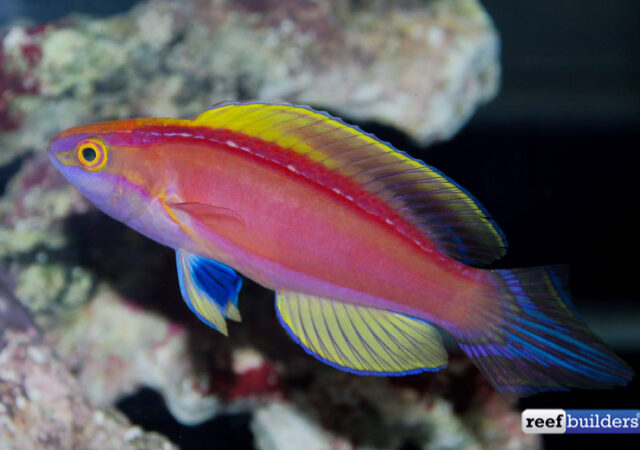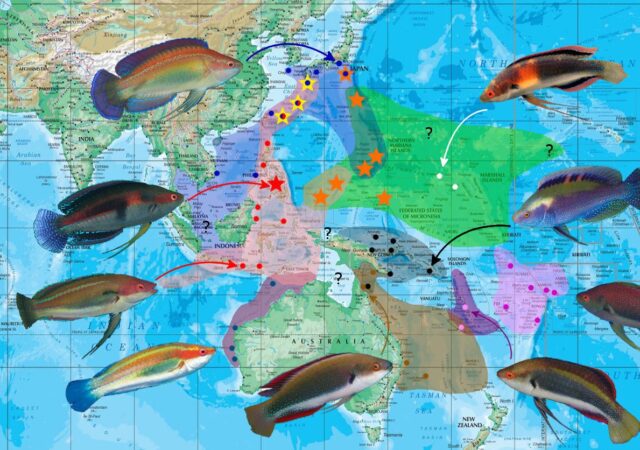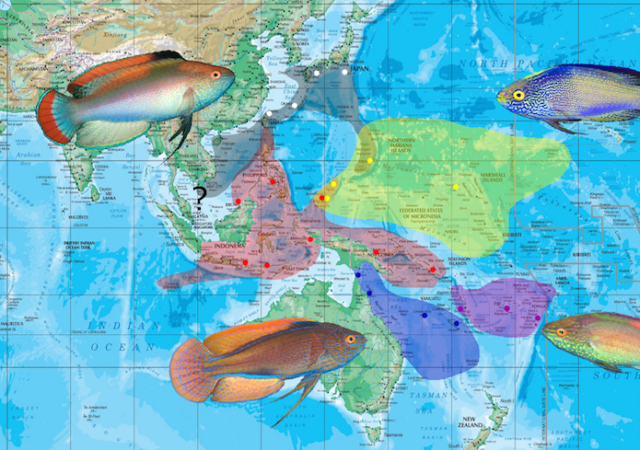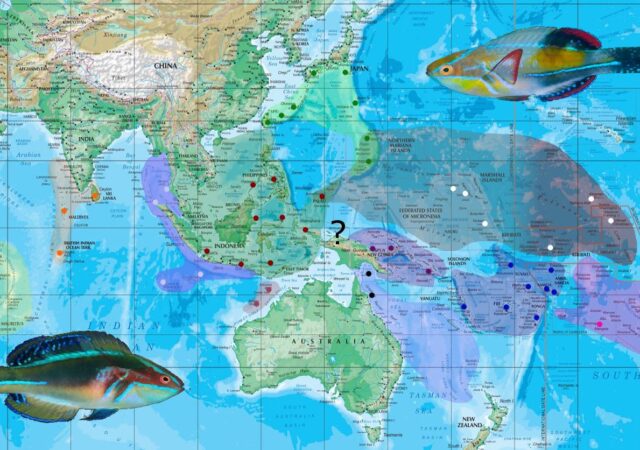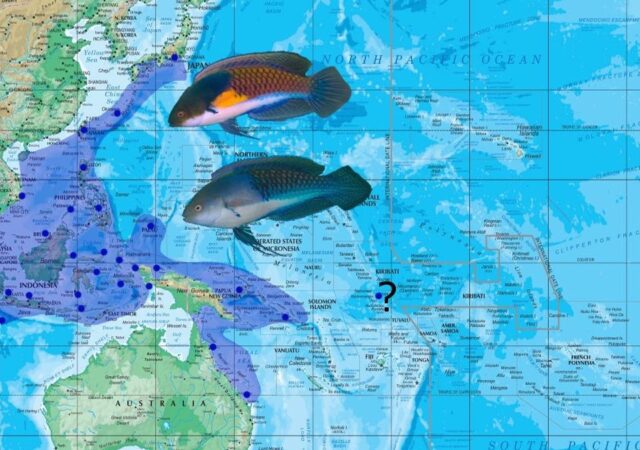Cirrhilabrus isosceles is the 51st member of the fairy wrasse genus, and one whose time to receive official scientific description has been long overdue. Long referred to as C. cf lanceolatus or the Pintail Fairy Wrasse, this is a fish that packs…
4.0 Cirrhilabrus laboutei & the Origins of Fairy Wrasse Diversity
At last, we’ve reached the thrilling conclusion to this comprehensive review of Fairy Wrasse evolution, and it’s time to once more dwell upon the topic of the group’s origins. As we’ve previously discussed, this enormously diverse genus can be comfortably categorized…
3.4 Fairy Wrasses: The filamentosus group
The filamentosus group presents the reader with a collection of familiar, aquarium-friendly species, many of which are exuberantly colored and morphologically quirky. Despite some superficial differences in colors and fin shapes, the overall morphology strongly implies that this is the…
3.3 Fairy Wrasses: The rubriventralis group
The rubriventralis group features some of the most beloved and charming species of fairy wrasses, ornately adorned with painterly brilliance and morphological exuberance. Unlike some of the characteristically larger members of Cirrhilabrus, the rubriventralis group members remain small, rarely exceeding…
Awesome Fish Spotlight: Cirrhilabrus roseafascia from the Coral Sea
Among the two dozen or so most commonly encountered fairy wrasses, the elusive rose banded fairy wrasse, Cirrhilabrus roseafascia is not among them. This species is a relative newcomer to the documented fairy wrasse group, having only been described in 1982.…
3.2 Fairy Wrasses: The temminckii group
The temminckii group plays host to some of the genus’ larger and more unappealing species. Burley, pugnacious and often glazed in matte grey, these un-fairy looking fairy wrasses are more often than not associated with the ugly duckling sobriquet. Despite…
3.1 Fairy Wrasses: The rubrimarginatus group
The rubrimarginatus group is home to some of the most well-known (and well-loved) of the Fairy Wrasses. The group can be divided rather equally into two clades, each with their own separate diagnostic features. The males attain fairly large sizes,…
2.3 Fairy Wrasses: The exquisitus complex
Cirrhilabrus exquisitus is an unusually widespread and variable species which appears to form a lineage alongside the scottorum and cyanopleura groups, with all three sharing characteristically mid-length pelvic fins. Unlike any other species of Cirrhilabrus, the Exquisite Fairy Wrasse has…
Is Japan really home to any endemic Fairy Wrasses? Cirrhilabrus katoi disagrees
The reefs of Japan are known to harbour unique fauna found nowhere else on this earth. Rife with endemics, species such as Centropyge interrupta, Chaetodon daedalma, Genicanthus takeuchii, Chromis mirationis and a whole hodgepodge of other reef fish call this…
2.2 Fairy Wrasses: The cyanopleura group
The cyanopleura group is the next collection of fairy wrasses from the second major Cirrhilabrus clade (whose member taxa share the trait of mid-length pelvic fins) and is sister to the scottorum group. In the latter, certain traits that were diagnostic to the members will be…


